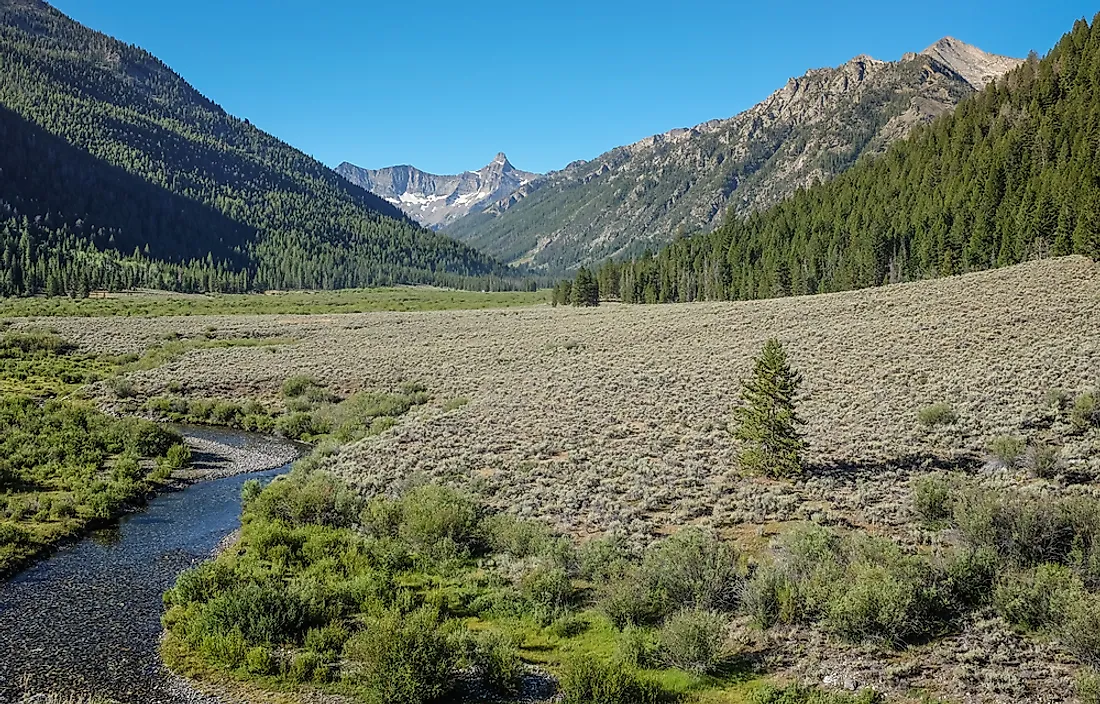The Biggest National Forests In The United States

In 1876, the US Congress created an office to evaluate the conditions of forests in the US. In 1891, President Theodore Roosevelt assigned the control of the newly named, national forests to the US Forest Service. The US Forest Service, under the US Department of Agriculture, is responsible for the management of 154 National Forests in the US today. All of these U.S. National Forests collectively have a total land area of 188,336,179 acres. Most US states have at least one national forest with the exception of ten states: Rhode Island, New Jersey, North Dakota, Massachusetts, Maryland, Hawaii, Iowa, Connecticut, Kansas, and Delaware.
Largest National Forests in the US
Many of the massive U.S. National Forests are to be found west of the Mississippi River. Topping the list is Tongass in Alaska with most of its 17 million acres are composed of the Pacific temperate rain forest. Second is Chugach in Alaska with roughly 6.9 million acres of forests, rivers, and glaciers. Third is Humboldt-Toiyabe that straddles Nevada and California with 6.7 million acres with 23 wilderness areas. Fourth is Salmon-Challis, in Idaho with about 4.2 million acres that covers most of the River of No Return Wilderness area and the Salmon River. Fifth is Bridger-Teton in Wyoming with about 3.4 million acres consisting of three wilderness areas and home to the Green River. It is also home to 7 out of the 10 biggest glaciers in the world.
Significance of U.S. National Forests
These and other U.S. National forests, or any wilderness area for that matter, contribute to the welfare of a country and its people. Fresh air, clean water, and fertile soil are all related to good forest administration. The success of national forests also affect the continued economic development and tourism industry in the US. These two sectors are linked with each other bringing multiple benefits to the economy. According to the US Forest Service, the fastest growing use of national forests is for recreation. such as rock climbing, bird watching, fishing, hunting, and camping. This is seen as having over 38 times more benefits to the national economy than the logging industry.
Forests and Climate Change
Climate change poses a serious threat to all national forests around the world. The destruction and impairment of forests and wilderness areas due to deforestation and climate change could also seriously affect the world's ecosystem's climate regulation qualities such as watershed protection, wood and fuel delivery, carbon sequestration, temperature regulation, erosion reduction, countless species' habitats, and flood control.
According to the Forest Adaptation Resources, it is important that the maintenance of these benefits are kept to a high level, without which future costs could come in the form of ever worse natural disasters. The prioritization of efforts is about reducing vulnerability of resources, combining flexibility with new, research-based knowledge. Resilience in managing these ecosystems will help in preventing ecological disturbances.
The Biggest National Forests In The United States
| Rank | National Forest | State | Area (millions of acres) |
|---|---|---|---|
| 1 | Tongass | Alaska | 17 |
| 2 | Chugach | Alaska | 6.9 |
| 3 | Humboldt-Toiyabe | Nevada, California | 6.7 |
| 4 | Salmon-Challis | Idaho | 4.2 |
| 5 | Bridger-Teton | Wyoming | 3.4 |
| 6 | Superior | Minnesota | 3.2 |
| 7 | Mark Twain | Missouri | 3 |
| 8 | Tonto | Arizona | 2.9 |
| 9 | Boise National Forest | Idaho | 2.9 |
| 10 | Gila National Forest | New Mexico | 2.7 |











